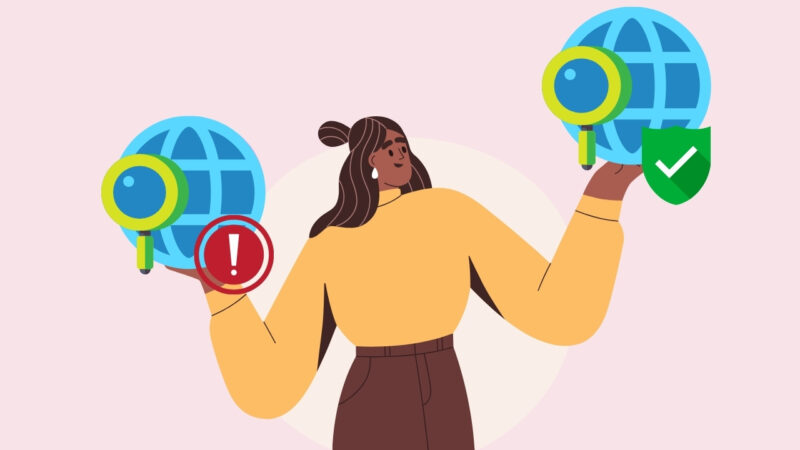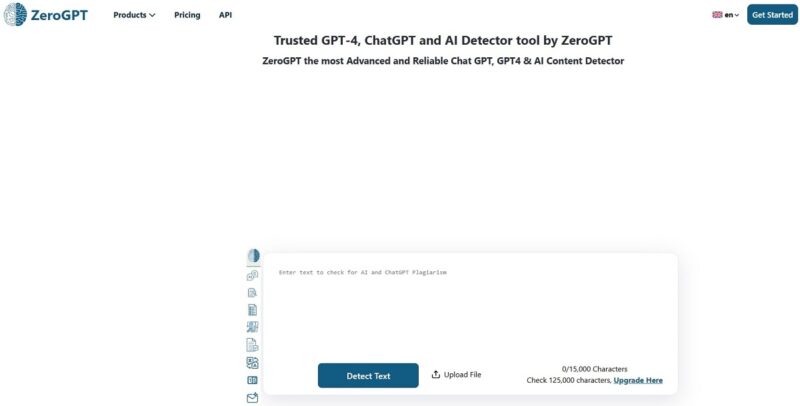In today’s digital age, misinformation has become a pervasive issue. The sheer volume of online content makes it difficult to discern fact from fiction.
Verifying information is essential for making sound decisions in personal, financial, and societal contexts.
Taking the time to assess the credibility of what we read ensures a more informed and thoughtful society.
The Landscape of Online Information

The evolution of information access has shifted drastically over time. Historically, libraries and traditional forms of media were the primary sources of reliable information. Fact-checking was a meticulous process involving printed materials, expert reviews, and peer validation.
The digital revolution has introduced new dynamics. While the internet democratized information access, it also paved the way for user-generated content that often lacks proper vetting.
Social media platforms have amplified this issue by allowing unverified posts to gain widespread traction within minutes. The result is an environment where misinformation spreads rapidly, especially during crises.
Traditional gatekeepers of information, editors, publishers, and scholars, have given way to algorithms and influencers. While technology offers convenience, it demands a higher level of critical thinking. Readers must adopt strategies to filter credible sources from unreliable ones, ensuring their trust is well-placed.
Why Verifying Information Matters

The dangers of misinformation have far-reaching consequences. On an individual level, it can result in:
- Financial mistakes: Falling victim to scams, fraud, or deceptive investment schemes.
- Health-related errors: Trusting unproven medical advice or harmful remedies.
- Belief in conspiracy theories: Accepting baseless claims as fact, which can alter perceptions and actions.
On a societal level, misinformation can exacerbate challenges and disrupt progress:
- Amplification of tensions: False narratives can fuel conflicts and divide communities.
- Emergency disruption: Incorrect data during crises, such as natural disasters or pandemics, can hinder effective responses and worsen outcomes.
Crises illustrate how unchecked misinformation can spiral into widespread panic or poor decision-making, affecting large populations.

Accurate information, in contrast, serves as a cornerstone for informed action and collective success. Its benefits include:
- Empowering decision-making: Equipping people to make logical, well-reasoned choices in personal, financial, and professional matters.
- Encouraging meaningful contributions: Supporting constructive dialogue and collaborative problem-solving.
- Fostering intellectual growth: Building a foundation for learning and innovation.
By verifying information:
- Trust is strengthened: Confidence in institutions, media, and data sources grows.
- Problem-solving improves: Accurate information fosters better collective responses to societal challenges.
- Public discourse is elevated: Discussions become more informed and solutions-focused.
Making verification a routine practice is a responsibility that benefits not only the individual but also the broader community. It is a safeguard against manipulation, a tool for accountability, and an essential habit for navigating a world full of information.
Identifying Reliable and Unreliable Sources

Reliable sources often have established reputations. Academic institutions, government websites, and renowned media outlets prioritize accuracy and accountability.
They provide clear citations and maintain transparency about authorship and affiliations. Peer-reviewed articles and professional publications are also hallmarks of credibility.
Conversely, unreliable sources are marked by sensational headlines designed for clicks rather than truth.
They often lack identifiable authors, present heavily biased opinions, or show little concern for factual accuracy. A poorly designed website with frequent grammatical errors and intrusive ads can also be a red flag.
Understanding these characteristics helps readers navigate the vast online world. By focusing on reputable outlets and avoiding content with questionable motives or origins, one can significantly reduce the risk of consuming false or misleading information.
Practical Steps for Everyday Verification
Developing the habit of verifying online information can significantly enhance decision-making and prevent the spread of misinformation.
With the abundance of tools and techniques available, even simple measures can have a meaningful impact.
Use Collaborative Tools

Collaborative tools designed for content verification are an excellent starting point.
Platforms like Zero GPT and Collabwriting evaluate content for authenticity, providing insights into patterns and detecting inconsistencies.
These tools streamline the process of analyzing claims, especially for those who are short on time.
Approach Social Media with Caution
Social media platforms often serve as breeding grounds for misinformation. Engaging critically with content on these platforms involves:
- Look into the posting history of an account to identify patterns of credibility or potential bias. Accounts with a history of sensational claims or inconsistent posting can indicate a lack of reliability.
- Accounts with large numbers of followers exhibiting bot-like behavior—such as generic usernames or identical engagement patterns—should raise red flags.
Balancing Subjectivity
The prevalence of personalized algorithms has significantly influenced how people interact with online information.
These systems curate content based on browsing habits, past interactions, and user preferences, offering tailored recommendations that often align with an individual’s existing beliefs.
While this customization provides convenience, it introduces significant challenges by fostering a limited view of reality and reinforcing biases.
Key risks associated with tailored algorithms include:
Echo Chambers
Algorithms frequently serve content that confirms pre-existing views, reducing exposure to opposing perspectives. This can lead to a distorted perception of reality, where alternative viewpoints are dismissed or ignored entirely.
Polarization
As individuals consume increasingly one-sided information, societal divisions can intensify. The absence of balanced viewpoints discourages critical evaluation of issues.
Reduced Critical Thinking
Over time, reliance on algorithms may diminish the habit of actively seeking information, as users grow accustomed to passively receiving curated content.
To mitigate these risks, proactive efforts are essential:
- Make a conscious effort to read materials across a range of reputable platforms, even those presenting opposing viewpoints.
- Consider why specific content is being shown and assess its potential influence on your beliefs.
- Opt for tools and platforms that prioritize impartiality and transparency in content delivery.
- Periodically disable personalized settings or use incognito modes to diversify the type of information encountered.
By actively seeking out varied perspectives and questioning automated curation, individuals can maintain intellectual balance and resist the constraints of algorithm-driven content consumption.
The Bottom Line
Critical thinking remains indispensable in today’s fast-paced digital environment. By pausing to verify information and seeking credible sources, readers can navigate online spaces responsibly. The effort to question and confirm ensures not only personal reliability but also contributes to a more informed society.











